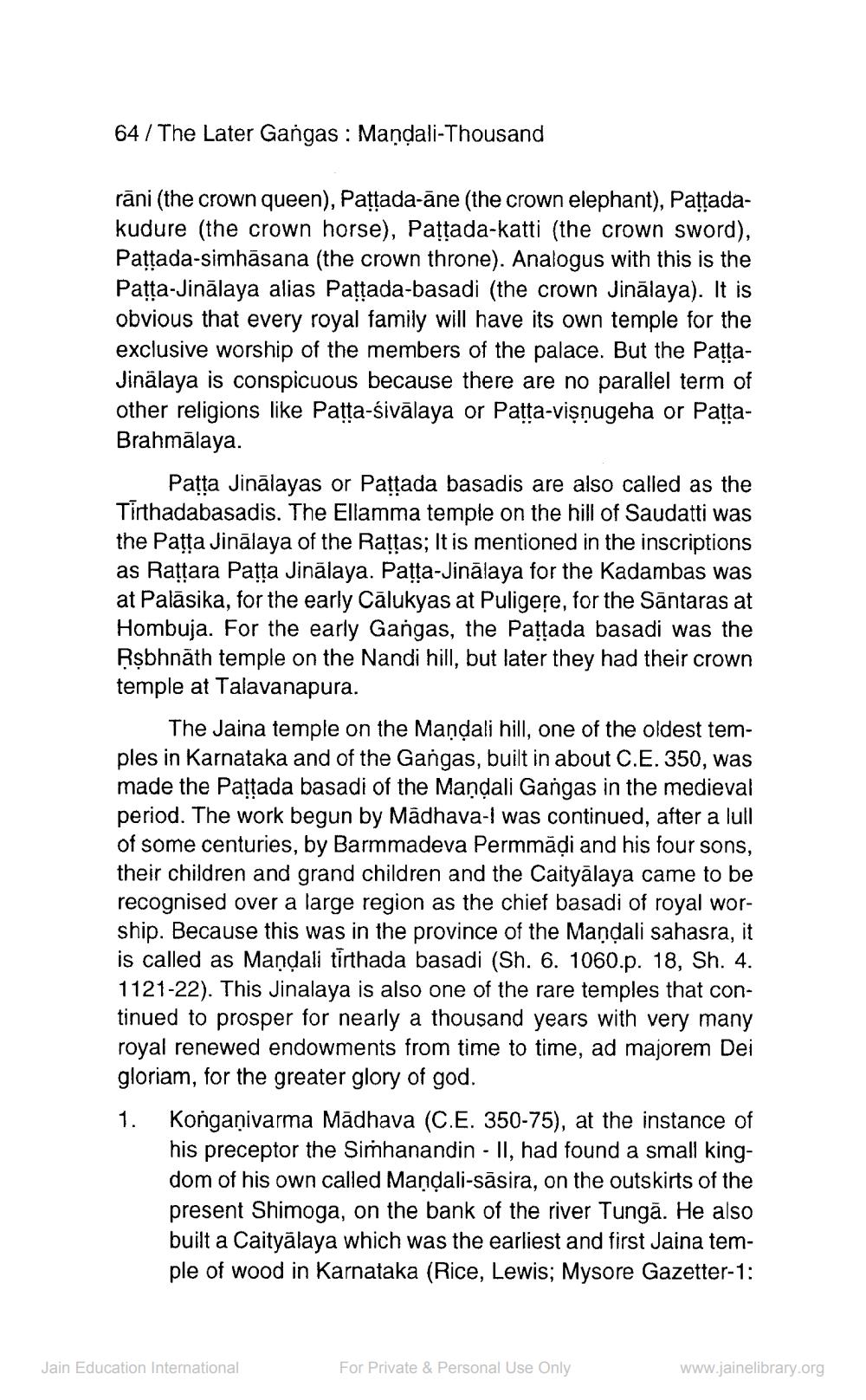________________
64 / The Later Gangas : Mandali-Thousand
rāni (the crown queen), Pattada-āne (the crown elephant), Pattadakudure (the crown horse), Pattada-katti (the crown sword), Pattada-simhāsana (the crown throne). Analogus with this is the Patta-Jinālaya alias Pattada-basadi (the crown Jinālaya). It is obvious that every royal family will have its own temple for the exclusive worship of the members of the palace. But the PattaJinälaya is conspicuous because there are no parallel term of other religions like Patta-śivālaya or Patta-vişnugeha or PattaBrahmālaya.
Patta Jinālayas or Pattada basadis are also called as the Tirthadabasadis. The Ellamma temple on the hill of Saudatti was the Patta Jinālaya of the Rattas; It is mentioned in the inscriptions as Rattara Patta Jinālaya. Pasta-Jinālaya for the Kadambas was at Palāsika, for the early Cālukyas at Puligese, for the Sāntaras at Hombuja. For the early Gangas, the Pattada basadi was the Rşbhnäth temple on the Nandi hill, but later they had their crown temple at Talavanapura.
The Jaina temple on the Mandali hill, one of the oldest temples in Karnataka and of the Gangas, built in about C.E. 350, was made the Pattada basadi of the Mandali Gangas in the medieval period. The work begun by Madhava-i was continued, after a lull of some centuries, by Barmmadeva Permmāời and his four sons, their children and grand children and the Caityālaya came to be recognised over a large region as the chief basadi of royal worship. Because this was in the province of the Mandali sahasra, it is called as Mandali tirthada basadi (Sh. 6. 1060.p. 18, Sh. 4. 1121-22). This Jinalaya is also one of the rare temples that continued to prosper for nearly a thousand years with very many royal renewed endowments from time to time, ad majorem Dei gloriam, for the greater glory of god. 1. Konganivarma Mādhava (C.E. 350-75), at the instance of
his preceptor the Simhanandin - II, had found a small kingdom of his own called Mandali-sāsira, on the outskirts of the present Shimoga, on the bank of the river Tungā. He also built a Caityālaya which was the earliest and first Jaina temple of wood in Karnataka (Rice, Lewis; Mysore Gazetter-1:
Jain Education International
For Private & Personal Use Only
www.jainelibrary.org




